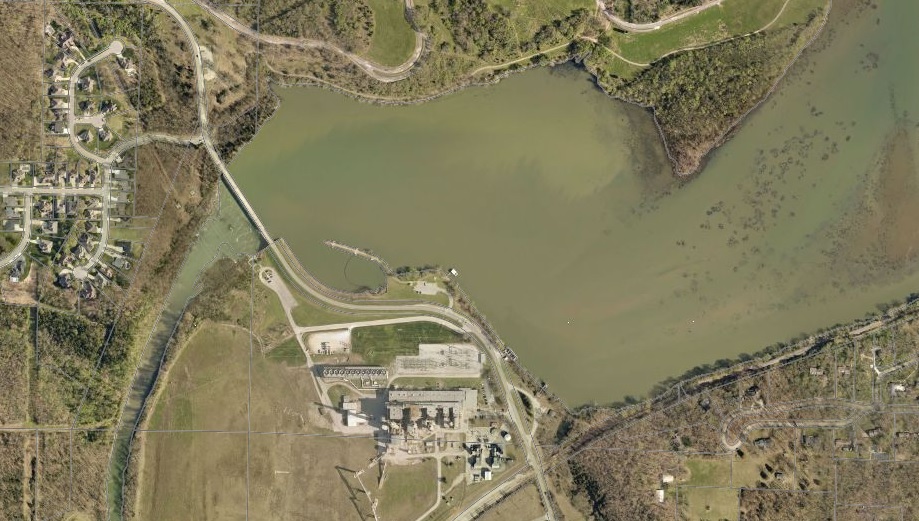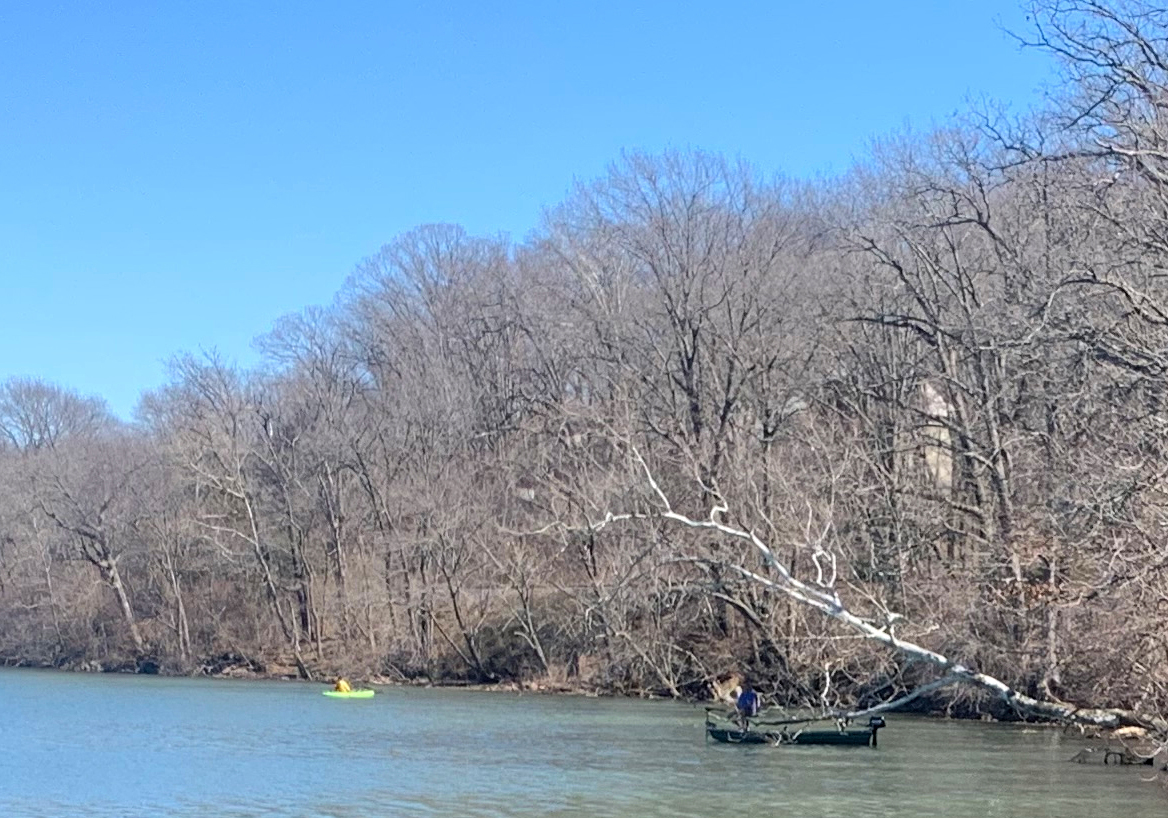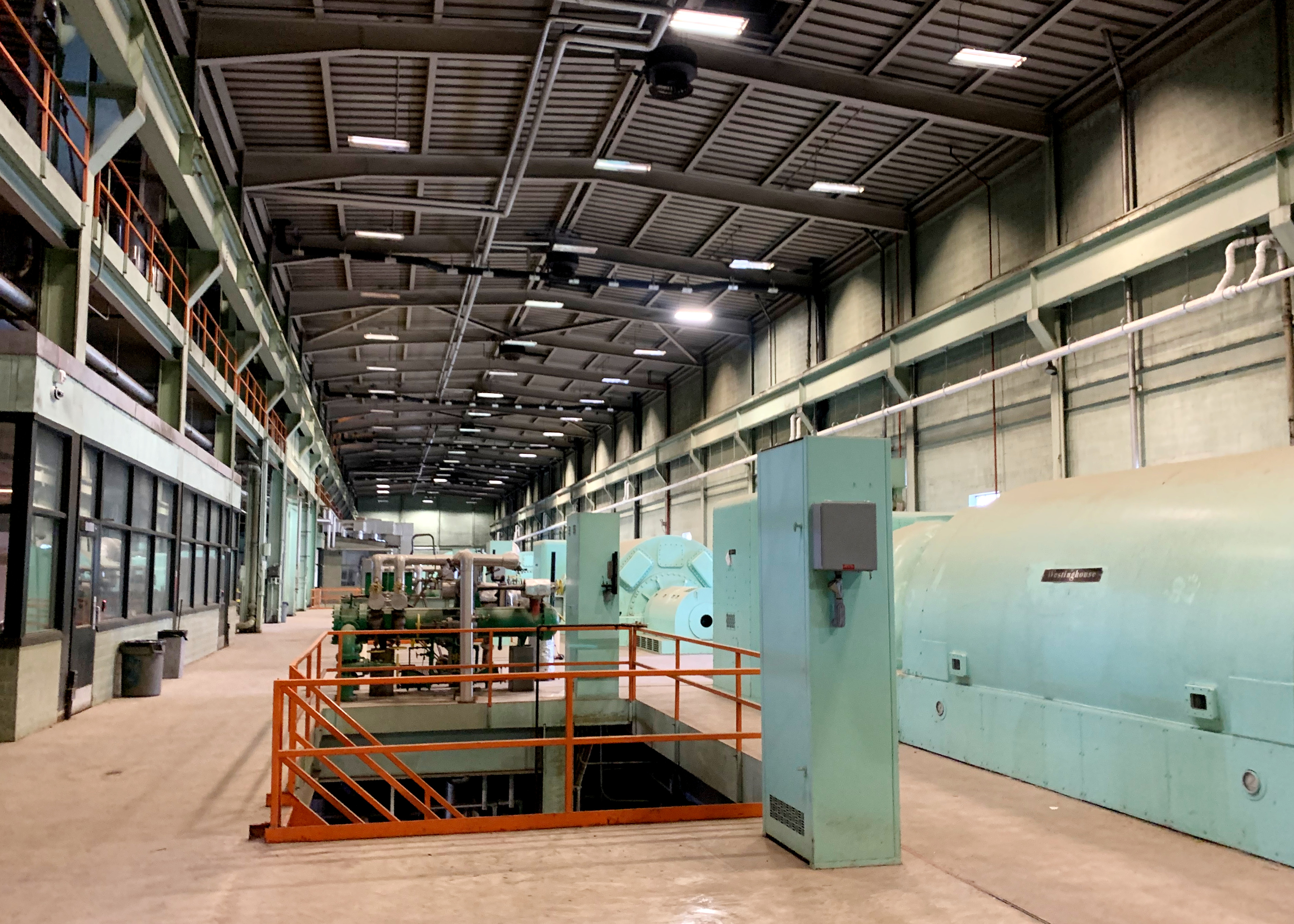If you feel strongly about the future of Lake Springfield — or even if you don’t — the people in charge of planning for what’s next would like to hear from you.
The city of Springfield held a kickoff event to seek input on Lake Springfield and the James River Power Station site as part of a $1 million study that will determine the environmental and economic future of more than 300 surface acres of water and about 700 acres of land. You can get up to speed on the plan, view some early documentation and take a survey at the Lake Springfield Plan website.
City of Springfield Brownfields Coordinator Olivia Hough led a presentation at the Springfield Art Museum Nov. 17, and outlined the process of a study on Lake Springfield that will result in a master plan for development by mid-2024.
“We’ll be working through this process, taking input, and hopefully coming up with a cohesive vision — something that we can use to show our state and federal funding partners that we can use to inspire investor confidence, where we have a roadmap and it says, ‘Hey, our community has looked at this, and this is what we have determined that we would really like to see here,’” Hough said.
The city of Springfield hired Crawford, Murphy and Tilly (CMT) Consultants to oversee the study. CMT Vice President Steve Prange explained his group is working with six other consulting firms, including Forward SGF authors Houseal Lavigne Associates, as sub-planners. That’s because of the size of the project, both in terms of the land and the money.
“It’s a tall order, it’s a massive project,” Prange said.

Prange outlined a set of goals that includes sustaining water quality on the James River, developing jobs that are resilient to economic changes, enhancing transportation and trails around the lake, creating recreation opportunities and engaging a diverse swath of the Springfield community in making the lake a destination that is inclusive for all.
“A thousand acres is a massive amount of land,” Prange said. “That includes the lake and the watershed of the James River, and within that thousand acres, there are a lot of things going on.”
By March, Prange said the consulting groups will be able to bring up some ideas for what to do with the dam at Lake Springfield.
Branching out from Forward SGF
On Nov. 14, the Springfield City Council voted 8-0 to adopt Forward SGF, a 20-year comprehensive master plan for growth. The 15-chapter plan contains guidelines for growth and development, and also encourages a philosophy by which Springfield should approach change over time.
“Quality of place,” defined as “qualities of life that make a location a desirable, competitive, and economically vibrant place to live,” is a key point of emphasis throughout Forward SGF and will be a key force guiding Lake Springfield.
“A unifying guiding principle emerged, and that No. 1 principle is quality of place,” Hough said.
There is a subarea plan for Lake Springfield found within the pages of Forward SGF. The comprehensive plan for Lake Springfield will give more depth to the suggestions of Forward SGF, providing the plan to develop Lake Springfield into an attraction, an environmental conservatory and place of employment.

The million-dollar study includes a hydrological study of the James River watershed, including the lake and dam, community engagement and a five-pronged written plan with points of emphasis on economic development, adaptive use of the power plant, recreation, transportation and land use.
“Quality of place — what makes Springfield and the surrounding area a place to which we all want to live, and stay and come back to,” Springfield Mayor Ken McClure said.
Hough said there is also a regional concept behind the future development of Lake Springfield.
“We realize that the geographic position of Lake Springfield is centrally located within our 10-county economic region, and we would like to also focus on opportunities for some of our underserved populations,” Hough said.
Breaking down barriers
Francine Pratt’s Pratt Consultants is one of the six firms partnered with CMT for the planning project. Pratt is also the director of Prosper Springfield and writes a monthly column for the Hauxeda. On Nov. 17, Pratt said it’s important to address barriers that might keep Springfieldians from enjoying the economic benefits a redeveloped Lake Springfield could offer.
“When we talk about economic development, it’s even a strong focus on what we call the hidden workers, of making sure they’re given opportunity,” Pratt said. “That’s considered people with disabilities, people who were previously incarcerated, the race and ethnic breakup of our community.”
Pratt encouraged all Springfield residents to give their input toward the Lake Springfield redevelopment plan.
“This has to be accessible to everyone and we need to hear everyone’s voice, so whether it’s online, whether it’s a paper survey, we need to hear from you; we need your input, we need your thoughts,” Pratt said.
The Southwest Missouri Council of Governments (SMCOG) helped to secure the EDA grant. The U.S. EDA funds SMCOG, “to bring together the public and private sectors to create an economic development roadmap to strengthen the regional economy, support private capital investment and create jobs.”
What about the power plant?

The 60,000-square-foot James River Power Station building still stands, and will continue to occupy its place on the south end of Lake Springfield. Hough said it’s important for Springfield residents to know the power plant is not open for exploration.
“Even though the plant was decommissioned in 2020, there are still active City Utilities operations on the site,” Hough said. “It’s important to note that this is a safety issue that you should know about, so basically, we want to make sure that people are aware of that, that this is a secure facility, that there is high voltage and other hazards present, so this is also under 24-hour surveillance.”
Construction of the lake and power plant began in 1955. Some parts of the facility, like the mint green-colored machinery covers and panels, still have a definite 1950s feel in 2022. The first generation unit went into service in 1957. At the time the plant opened, it was about three miles outside the Springfield city limits.
“It’s a massive facility, it’s built like a rock, and there are just so many potential reuse alternatives there, but we want it to make economic sense and we want it to be a catalyst for growth around the area,” Prange said.
Some of the plant’s boilers used coal, while others used natural gas. Three of the units went offline in 2010. The four flue stacks were demolished Feb. 19, 2022.
City Utilities President Gary Gibson explained the site still has two generators that run on natural gas combustion turbines used during times of peak demand for power, particularly during extreme cold weather.
Gibson is excited about what the former coal-fired power plant could become, given the right economic investments.
“I’m confident that we can do some really great things out there through partnerships that kind of coexist between the things that we see we need to continue to do out there to support our community,” Gibson said. “I can really see some advanced energy demonstration projects and things like that as we try to get to a more sustainable future in our community.”
Kissick Avenue will likely need to undergo improvements to accommodate more cars and provide safe entry and exit for people who visit Lake Springfield for a variety of reasons. Prange said it will also be important to keep environmental concerns at the top of mind for any development that occurs within the thousand-acre project area.
U.S. Secretary of Commerce Gina M. Raimondo announced the grant for the study of Lake Springfield Feb. 10, 2022. The grant is funded by the American Rescue Plan and EDA’s $300 million Coal Communities Commitment, and is an 80-20 match to complete. The local match will be $60,000 from City Utilities, $40,000 from the Springfield Environmental Services Department and a $100,000 contribution from the nonprofit Hatch Foundation.

